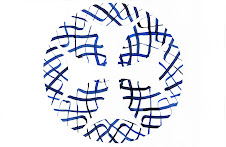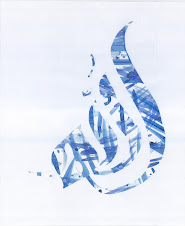
I occasionally do attempt representational painting, and this is one such attempt. As you can see, the results are very abstract.
This was my first try at painting the wildflowers of Texas. The Blue Bonnets fading into the Crimson Clover. The fields with their riots of color, each looking like paint splattered upon a canvas. Driving past field after field, and gradually watching the colors shift as I drove into Louisiana, the artist part of my brain was busy plotting on how to paint this scene.
The green background was laid down in careful hues of green. The light green, dark green, yellowed green. Each was painted. And then I took a toothbrush, and started flicking the water colors on top. It's a slow process to build up the splattered paint, but well worth the effort.










